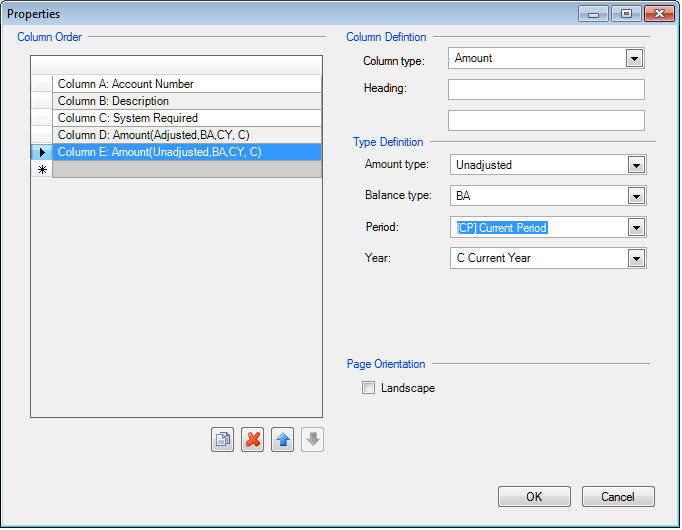We moved!
Help articles have been migrated to the new Help and Support. You can find help for your products and accounts, discover FAQs, explore training, and contact us!
For licensed users of Accounting CS Workpapers
Use the following procedure to create a variable that can be inserted into the selected cell of a custom Excel workpaper.
- Open the workpaper with Microsoft Excel.
- Select the cell in which to insert a variable.
- In Microsoft Excel, choose Insert Formula
 in the Workpapers CS add-in ribbon.
in the Workpapers CS add-in ribbon. - In the Variable Type section, choose Amount or Text.
- In the Formula grid, select the Source, Name, and Type for a Text variable, or the Source, Name, Type and Operator for an Amount variable.
- When you choose Amount as the variable type, you can define the amount type, period, year, and segment that applies to the entire formula.
Notes
- You can choose Format Variables
 in Workpapers CS add-in ribbon to format amounts in the workpaper. Show me
in Workpapers CS add-in ribbon to format amounts in the workpaper. Show me
- Amount variables display debits as positive amounts and credits as negative amounts regardless of the classification code that is assigned to the account.
- If you choose to insert a Text variable into the workpaper with Engagement Properties selected as the Source, and a Date (Beginning Date, Ending Date, or Period End Date) selected in the Name column of the Formula grid, you can choose Format Variables in the Workpapers CS add-in ribbon to select a specified date format. Show me
- The contents of the drop-down menus in the Formula grid of the Insert Variable dialog are based on the variable type that is selected.
- When you create a Text variable that flows from *Engagement Properties (Source) and Period End Date (Name), you can specify a period and year for the variable in the Amount Definition section of the Insert Variable dialog.
- The contents of the drop-down menus in the Amount Definition section of the Insert Variable dialog applies to the entire formula.
- To edit a period for multiple cells in an custom Excel workpaper that is open from the Accounting CS Workpapers , choose Properties in the Workpapers CS add-in ribbon and make the appropriate changes for the selected cell. Show me.
Inserting inline variables
There are some instances where you may want to insert a single date variable or multiple date variables in the middle of a paragraph of text. Use the following examples to insert a date variables within a paragraph.
Example 1: Insert a single inline date variable
If you need one date inserted into a cell with text in a blank Microsoft Excel workpaper, you can copy and paste the following formula into your workpaper and make the necessary modifications, such as changing the period or date format. Be sure to replace Your text here with your own text and include the quotation marks.
="Your text here"&TEXT(WPCSText("EP<Period End Date'Description><Text'Unadjusted'CP'C'>"),"MMMM DD, YYYY")
This variable produces the following text when you print or preview the report.
" Your text here December 31, 20XX" (where XX is the current year.)
Example 2: Insert multiple inline date variables
If you need multiple dates inserted into a cell with text in a blank Microsoft Excel, copy and paste the following formula into your workpaper and make the necessary modifications, such as changing the period or date format. Be sure to replace Your text here with your own text and include the quotation marks.
="Your text here"&TEXT(WPCSText("EP<Period End Date'Description><Text'Unadjusted'CY'C'>"),"MMMM DD, YYYY") &"and"&TEXT(WPCSText("EP<Period End Date'Description><Text'Unadjusted'CY'1P'>"),"YYYY")
This variable produces the following text when you print or preview the report.
" Your text here December 31, 20XX and 20YY" (where XX is the current year and YY is the prior year.)
Was this article helpful?
Thank you for the feedback!




